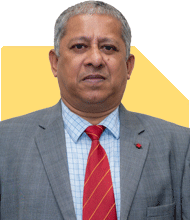Prof Suvasish Mukhopadhyay |2749 Answers |Ask -Follow
Career Counsellor - Answered on May 21, 2025
He has guided and motivated graduate and postgraduate students in science and technology to choose the right course and excel in their careers.
Professor Suvasish has authored 47 books and counselled thousands of students and individuals about tackling challenges in their careers and relationships in his three-decade-long professional journey.... more

Hi sir, my son got 98.49 percentile in jee mains, under obc-ncl quota ECE branch is chance in good iits
आप नीचे ऐसेही प्रश्न और उत्तर देखना पसंद कर सकते हैं
Mayank Chandel |2510 Answers |Ask -Follow
IIT-JEE, NEET-UG, SAT, CLAT, CA, CS Exam Expert - Answered on Feb 21, 2025
Prof Suvasish Mukhopadhyay |2749 Answers |Ask -Follow
Career Counsellor - Answered on Feb 24, 2025
Nayagam P P |10157 Answers |Ask -Follow
Career Counsellor - Answered on Aug 11, 2025
Nayagam P P |10157 Answers |Ask -Follow
Career Counsellor - Answered on Aug 11, 2025
Dr Nagarajan J S K |2254 Answers |Ask -Follow
NEET, Medical, Pharmacy Careers - Answered on Aug 11, 2025
Dr Nagarajan J S K |2254 Answers |Ask -Follow
NEET, Medical, Pharmacy Careers - Answered on Aug 11, 2025
Dr Nagarajan J S K |2254 Answers |Ask -Follow
NEET, Medical, Pharmacy Careers - Answered on Aug 11, 2025
Radheshyam Zanwar |6265 Answers |Ask -Follow
MHT-CET, IIT-JEE, NEET-UG Expert - Answered on Aug 11, 2025
Dr Karan Gupta |226 Answers |Ask -Follow
International Education Counsellor - Answered on Aug 11, 2025
Dr Karan Gupta |226 Answers |Ask -Follow
International Education Counsellor - Answered on Aug 11, 2025
Dr Karan Gupta |226 Answers |Ask -Follow
International Education Counsellor - Answered on Aug 11, 2025
Radheshyam Zanwar |6265 Answers |Ask -Follow
MHT-CET, IIT-JEE, NEET-UG Expert - Answered on Aug 11, 2025


















